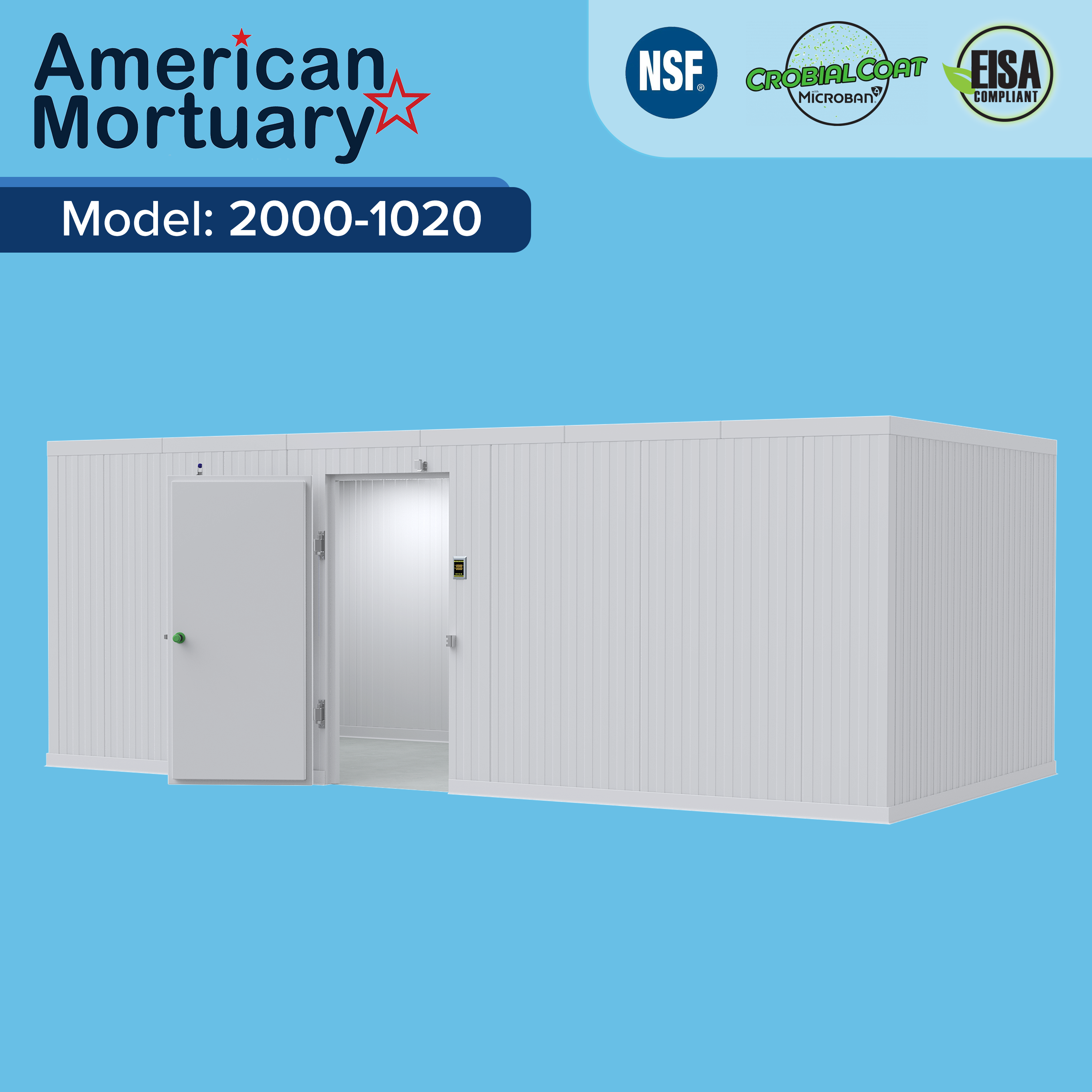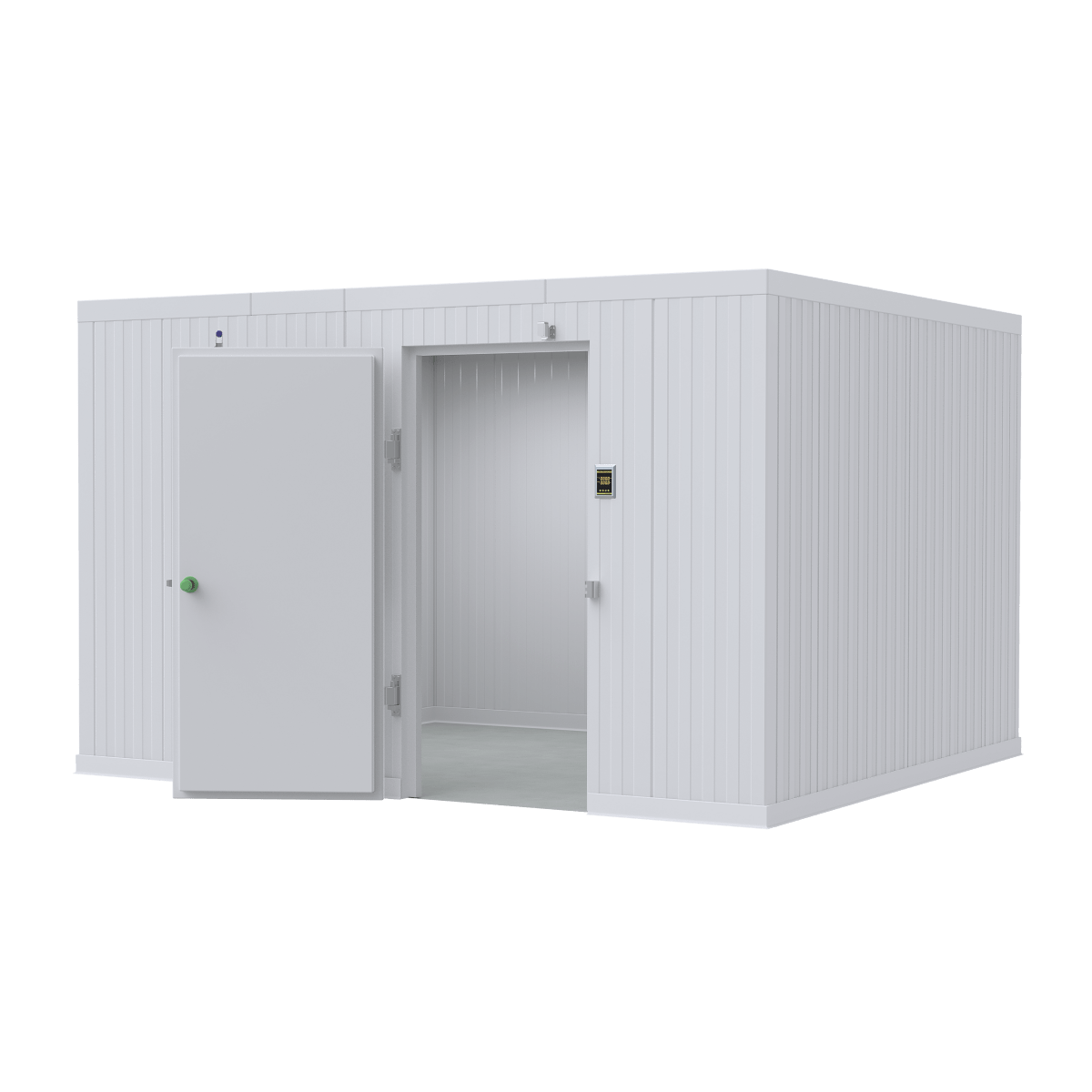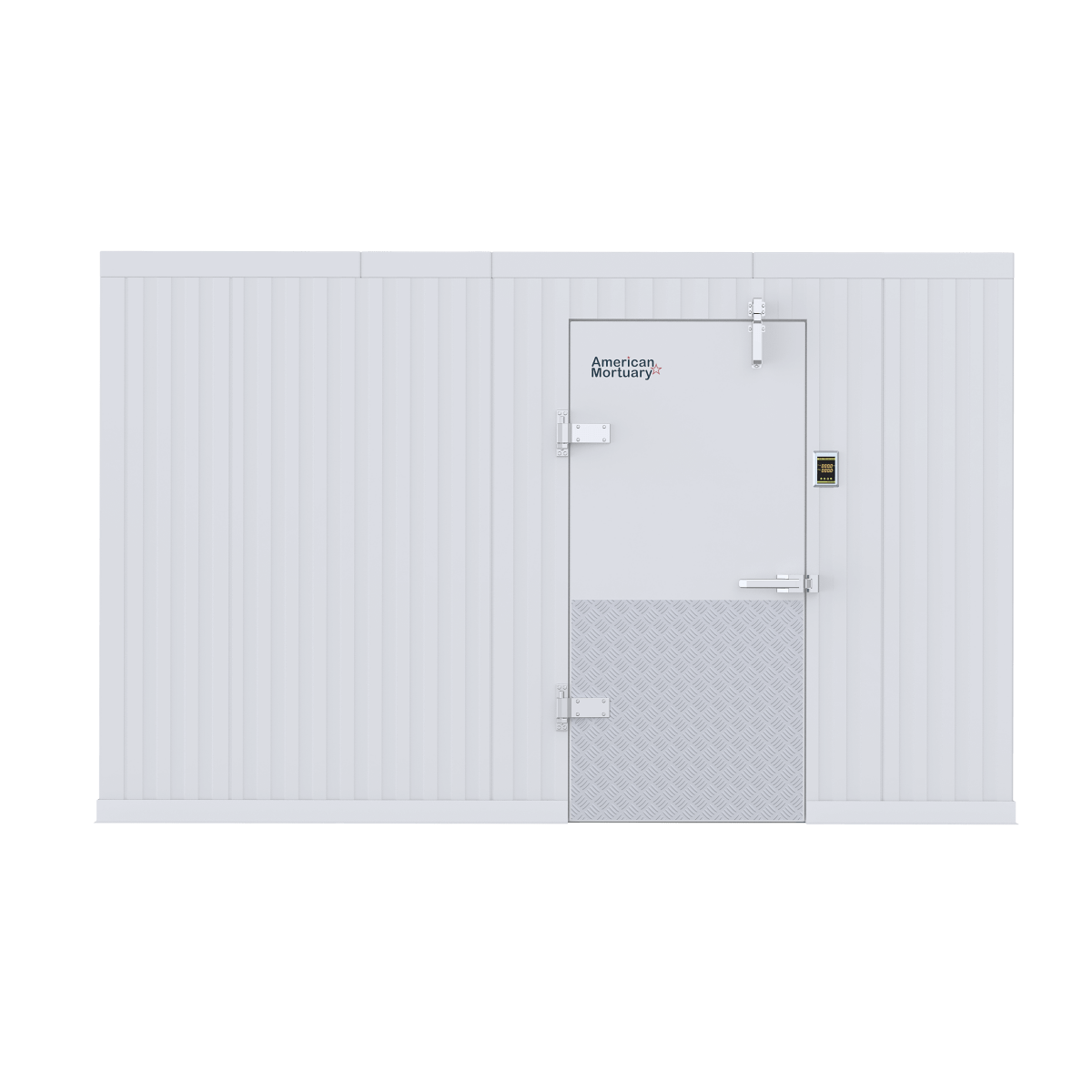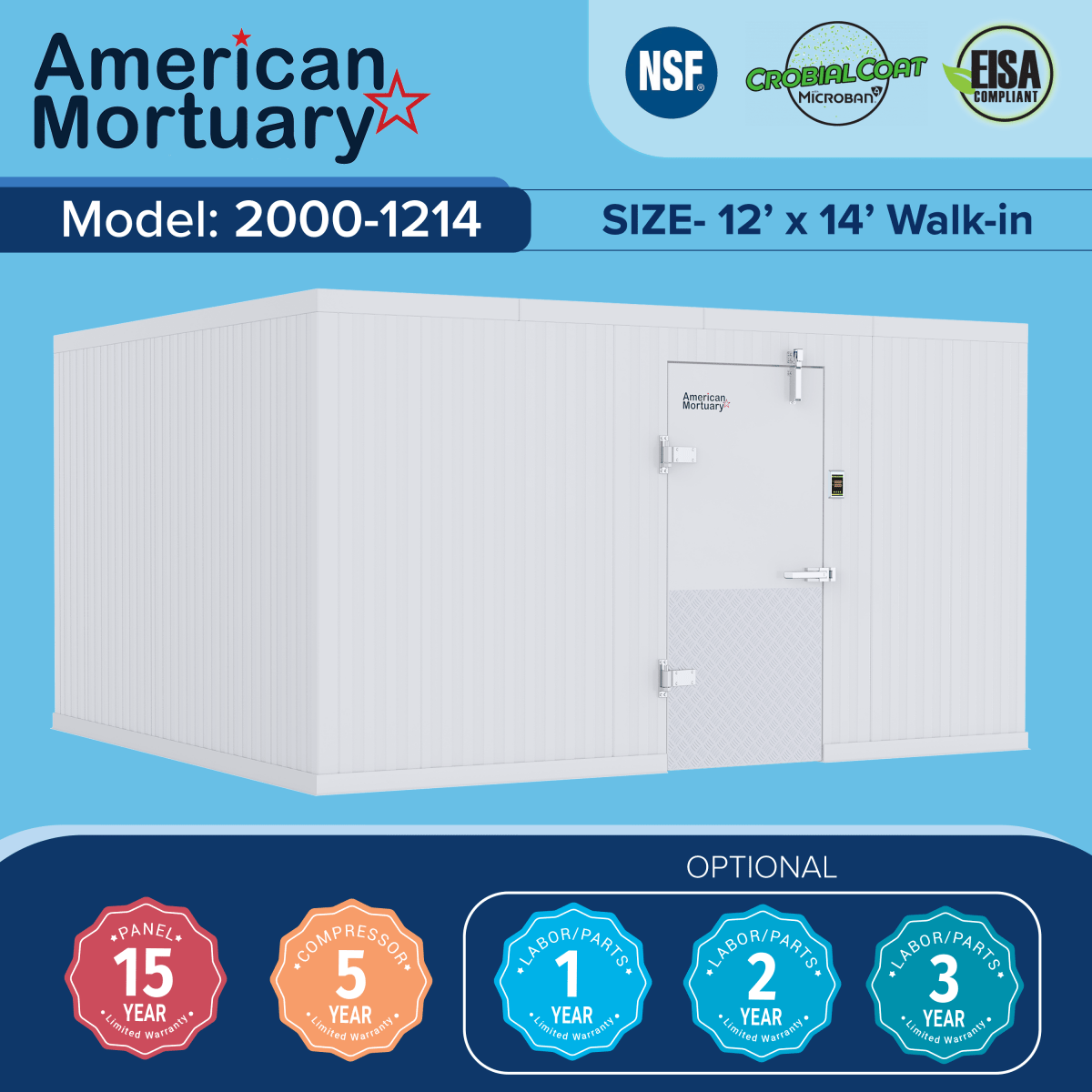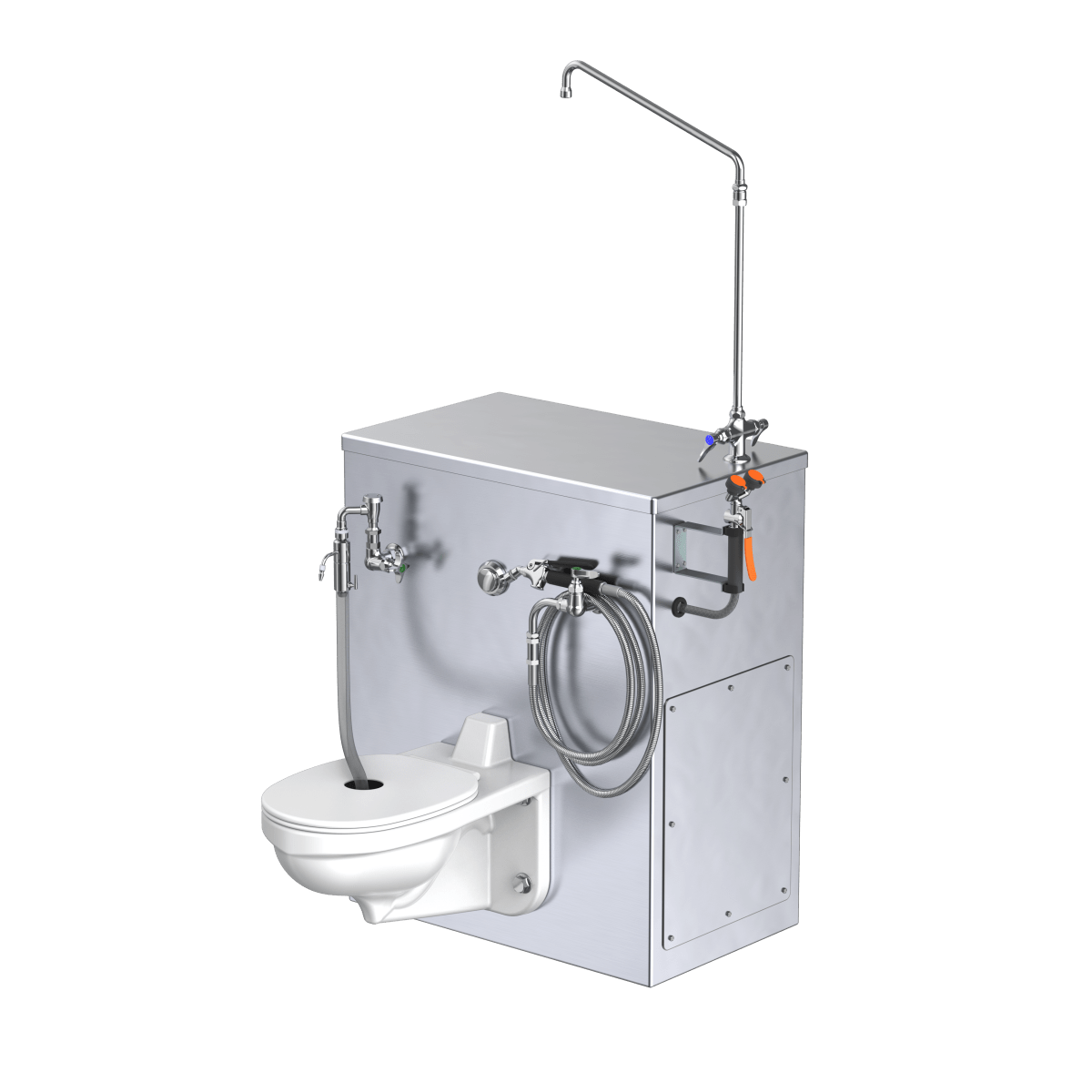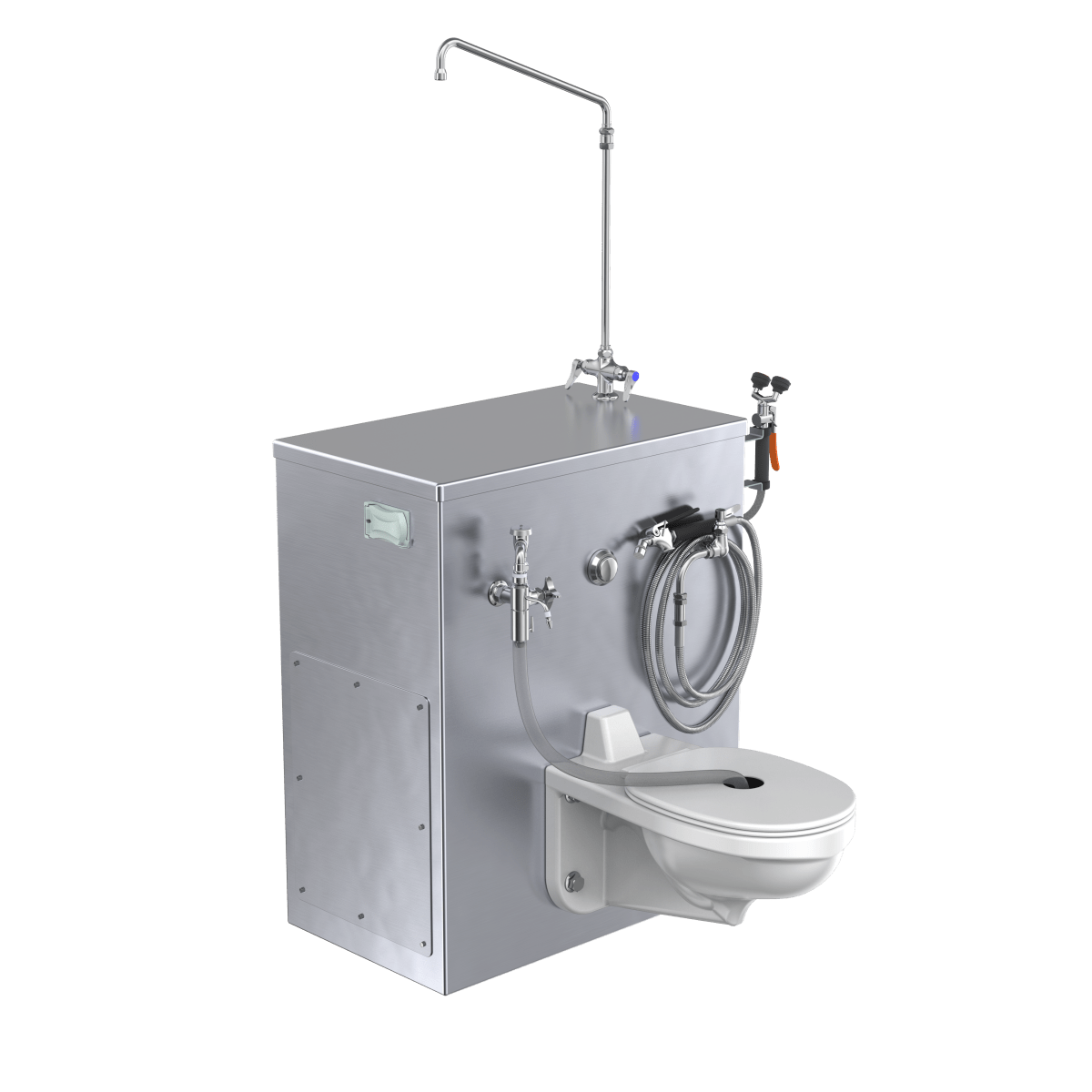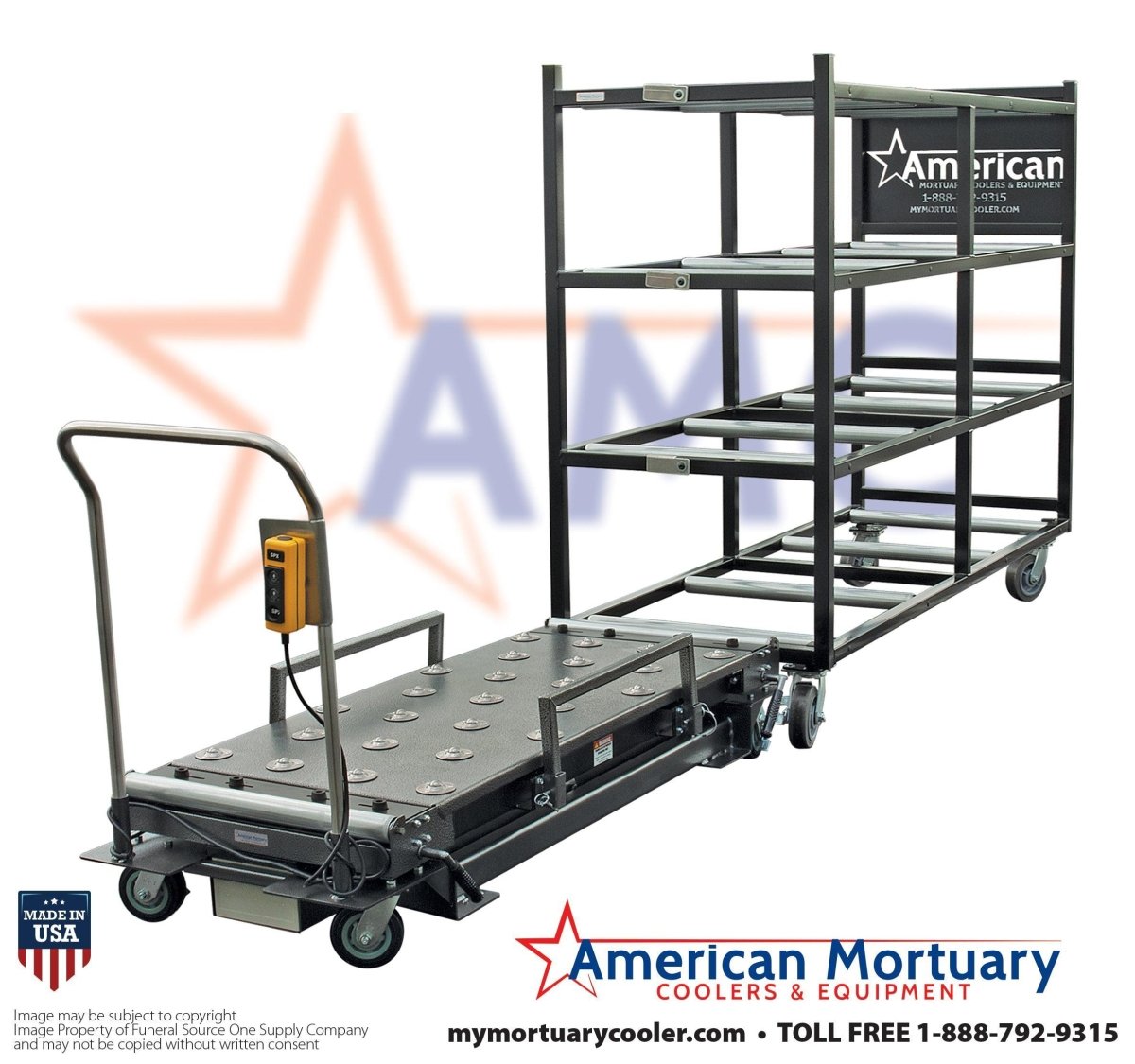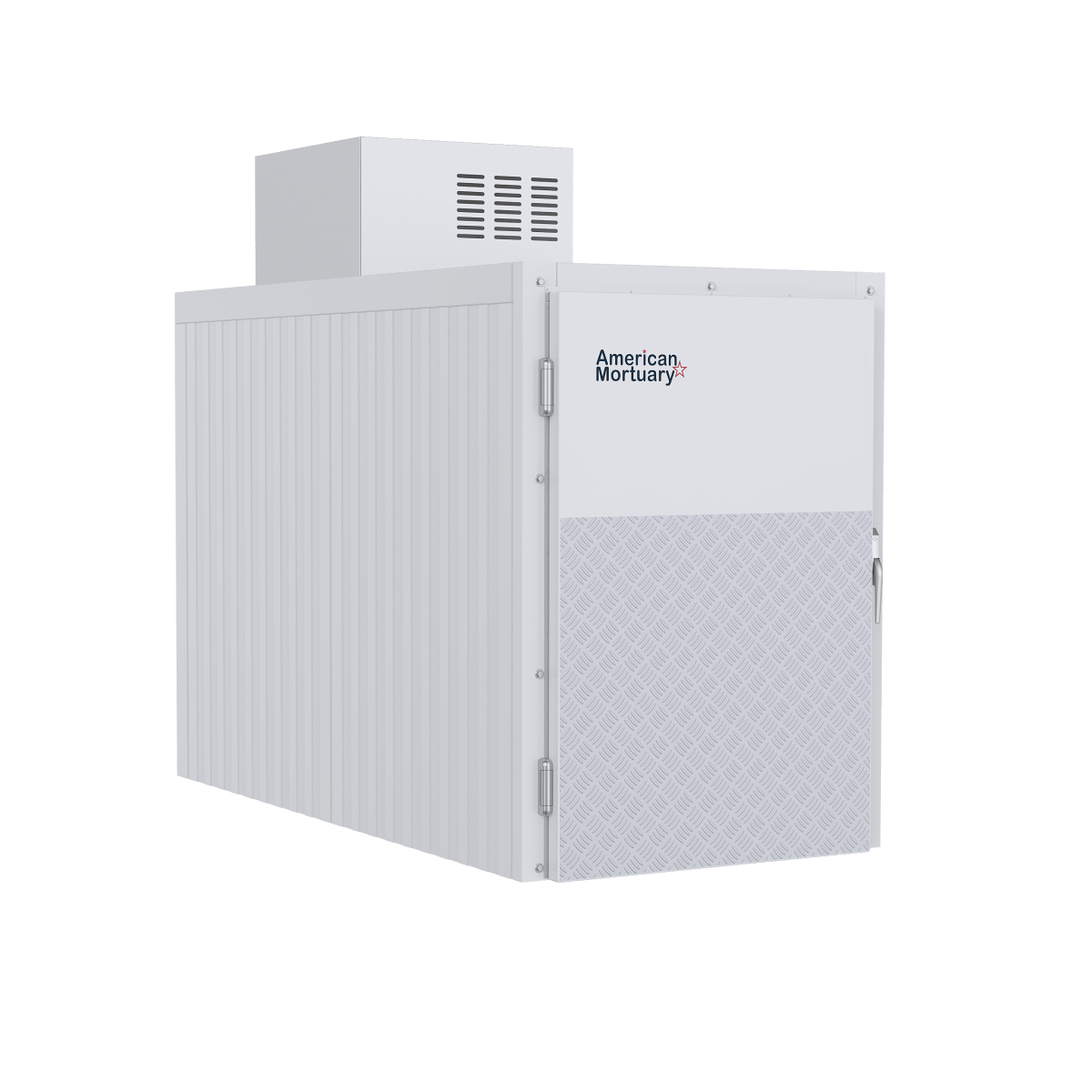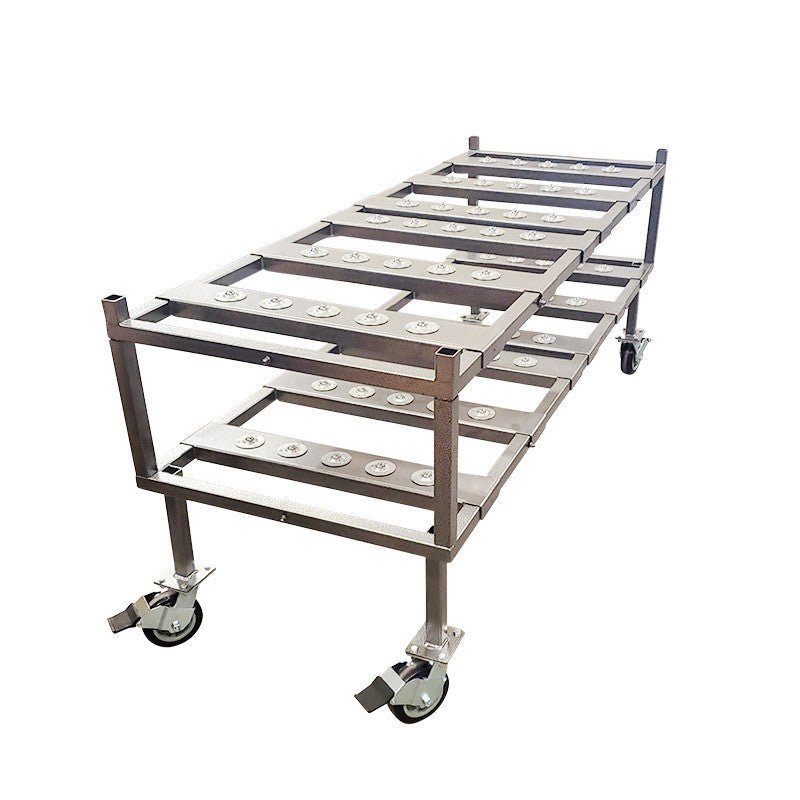Open uping the Potential of Exterior Walk-In Coolers
An exterior walk in cooler is a specialized refrigeration unit placed outside your main facility, designed to provide reliable cold storage while freeing up valuable indoor space.
Businesses choose outdoor walk-ins to:
- Free up valuable indoor space: Move cold storage outside to reclaim interior square footage for operations or customer-facing areas.
- Gain larger storage capacity: Outdoor placement often allows for bigger units than would be feasible indoors.
- Ensure durable, weather-resistant performance: These units are specifically designed to withstand the elements and maintain consistent temperatures.
For professionals in the mortuary, funeral, or forensic industries, reliable and efficient cold storage is non-negotiable. An outdoor model helps reclaim valuable indoor space and offers the flexibility for larger capacities that might not fit inside. Built to withstand diverse weather conditions, these coolers provide long-lasting, consistent performance. This guide explores everything you need to know about these vital refrigeration systems.

Why Choose an Exterior Walk-In Cooler?
Imagine your facility with more space and better organization. Staff move efficiently, and administrative offices have room to breathe. This is the operational improvement that an exterior walk in cooler can provide.
Moving cold storage outside transforms how your business operates. Freeing up valuable indoor square footage creates opportunities for better workflow, improved customer service, and even increased revenue potential. Instead of cramped spaces, you get open areas dedicated to their intended purpose. Your building's HVAC system no longer competes with heat from refrigeration equipment, and the constant hum of compressors moves outside, creating a quieter, more professional indoor environment.
Key Benefits of an Exterior Unit vs. an Interior One
When comparing an exterior walk in cooler to an indoor unit, the advantages are clear. Interior space reclamation is a primary benefit, allowing you to repurpose square footage for more valuable uses, like expanding preparation areas or creating more comfortable spaces for families.
Scalability is another compelling advantage. Outdoor units aren't constrained by your building's layout, offering flexibility for larger capacities as your business grows without expensive modifications. You aren't limited by doorways, ceiling heights, or structural walls.
Reduced construction costs can be substantial. Installing an indoor walk-in often requires demolition and complex integration. An outdoor unit, especially a pre-assembled model, eliminates much of this expense and disruption.
An exterior unit is also a relocatable asset. If your business moves, many outdoor walk-ins can be relocated, a significant advantage over a permanently installed indoor unit.
Potential energy savings are another benefit. In cooler climates, the ambient temperature helps the refrigeration system work more efficiently. Moving heat-generating equipment outside also reduces the load on your building's air conditioning.
How Outdoor Coolers Contribute to Business Space Optimization
Space optimization means using every area for its best purpose. An exterior walk in cooler helps you maximize revenue-generating space by freeing up indoor areas for family services, staff, or essential equipment.
Expanding storage without building expansion becomes straightforward. Instead of a massive construction project, you simply install an outdoor unit—a faster, less disruptive, and more cost-effective process.
Flexible placement options are particularly valuable. Freestanding units can be positioned independently for optimal workflow. Alternatively, thru-wall configurations provide seamless access from both inside and outside your facility, streamlining loading and unloading while maintaining convenient access from preparation areas.
This adaptability extends to long-term planning. An outdoor unit can often be reconfigured or relocated more easily than an indoor installation, protecting your investment as your business grows.

Critical Design and Construction Features for Outdoor Durability
An exterior walk in cooler is engineered to handle any weather while keeping your inventory at the perfect temperature. Durability, energy efficiency, and structural integrity are essential features, not just optional extras.
Weatherproofing and Structural Integrity
An outdoor cooler must withstand sun, cold, rain, and wind. Key defensive features include:
- Membrane roofing and sloped roof design: Durable PVC or TPO materials create a watertight seal, while the slope ensures efficient water runoff to prevent leaks and structural stress. Some models offer standing seam metal roofs for extra longevity.
- Wind load ratings: Quality units are designed to meet specific wind load requirements, ensuring your investment remains stable in high winds.
- Snow load capacity: In snowy regions, a cooler's roof must handle significant weight. Units can be rated for snow loads up to 100 pounds per square foot to prevent collapse.
- Seismic compliance: For earthquake-prone areas, seismic compliance ensures the unit remains stable during tremors. Our engineers evaluate every design to meet local code specifications.
- Rain hoods: These simple additions over door openings prevent rain from entering, keeping the internal temperature stable and floors dry.
- Coated metal finishes: Specialized coatings like stucco embossed galvalume protect against rust and corrosion. Light, natural colors are often recommended to reflect sunlight rather than absorb heat.
Construction Materials: Fiberglass vs. Metal Panels
The material of your exterior walk in cooler significantly impacts performance and longevity. While metal panels are traditional, seamless fiberglass offers compelling advantages for outdoor use.
| Feature | Seamless Fiberglass Construction | Metal Panel Construction |
|---|---|---|
| Durability | Extremely tough, resistant to impact, rust, corrosion | Durable, but susceptible to rust/corrosion if coating compromised, can dent |
| Weather Resistance | Excellent; absorbs minimal heat, withstands extreme temps, saltwater, blowing debris | Good, with proper coatings; can absorb/store heat, coatings can degrade over time |
| Maintenance | Easy to clean, resistant to moisture damage and bacteria | Requires careful maintenance to prevent panel degradation and moisture ingress |
| Insulation Integrity | Seamless design prevents voids, moisture ingress, and "hot spots" | Panel joints can be vulnerable points for moisture and air leaks, potentially compromising insulation |
| Thermal Conductivity | Very low (e.g., 0.04 BTUs), acts as an insulator | Higher; acts as a conductor, absorbing and storing heat |
| Longevity | Designed for long-term outdoor use, often with extensive warranties | Good, but environmental factors can accelerate wear |
Conventional metal exteriors are heat conductors, absorbing sun and making your refrigeration system work harder. Fiberglass has very low thermal conductivity, absorbing minimal heat. This means less strain on your system and lower electricity bills.
Seamless fiberglass construction creates a continuous, intact surface that prevents moisture damage and bacteria formation. It's also easy to clean by simply hosing it down.
Panel systems, whether metal or fiberglass, rely on quality urethane insulation, which offers excellent R-value. Standard panel thickness is 4 to 5 inches. For coolers, 4-inch insulation provides an R-value of 25-29, while freezers often require R-32 or higher.
Essential Components of an exterior walk in cooler
Several key components determine your cooler's daily performance:
- Insulation R-value and panel thickness: Higher R-values mean better thermal resistance and lower energy use. Quality units use foamed-in-place polyurethane or polystyrene insulation, with some panels offering a minimum R-factor of R-28.8 for coolers and R-32 for freezers.
- Refrigeration systems: Self-contained systems combine the condensing unit and evaporator into a single package, simplifying installation. Remote refrigeration systems separate the components, allowing heat and noise to be managed away from the cooler.
- Heated freezer doors: Essential for sub-freezing operation, these doors have heater wire and a heated pressure relief port to prevent ice buildup and ensure easy opening.
- Security door latches: Outdoor units require robust security, including keyed entry latches with interior safety releases, self-closing hinges, and security locking bars.
- NSF-approved components: NSF/ANSI 7 approval is crucial for ensuring sanitation and safety compliance, especially in mortuary applications.
Sizing, Installation, and Customizing Your Exterior Walk In Cooler
Choosing the right exterior walk in cooler means finding the perfect fit for your space, operational needs, and local building codes. Let's walk through the process of selecting and installing the ideal unit for your facility.
Typical Sizes and Configuration Options
Outdoor walk-ins offer incredible flexibility. While standard dimensions like 8'x10', 8'x12', and 8'x20' are common starting points, custom sizes are readily available. Manufacturers can create units up to 16 feet wide and over 60 feet long, ensuring you get the precise capacity you need.
For facilities requiring both refrigerated and frozen storage, cooler/freezer combos are brilliant solutions. These units have separate, individually controlled compartments within a single footprint.
You can also choose between freestanding units, which offer maximum placement flexibility, and thru-wall access configurations. Thru-wall setups allow access from both inside and outside your building, streamlining workflow for loading and unloading.
The Installation Process for an exterior walk in cooler
Installing an exterior walk in cooler requires careful planning for the outdoor environment.
- Site preparation: A level concrete pad is crucial. It must support the weight of the unit, its contents, and any surrounding foot traffic or equipment.
- Electrical requirements: A licensed electrician must handle the connection to ensure safety and code compliance. Systems may require 1.5 to 3 horsepower, often needing a 208-230 volt, three-phase connection.
- Code compliance and engineering documents: Outdoor installations face stricter requirements for seismic activity, wind loads, and snow loads. States like California and Florida may require engineering or "wet-stamped" documents to meet local codes.
- Differences from indoor installation: Outdoor units demand superior weatherproofing for panels, doors, and roofing, and they require a dedicated concrete pad, unlike many indoor units.
- Unit delivery: Units can arrive fully assembled and ready for electrical hookup, or as modular panels for on-site assembly. Pre-assembled units are placed with a crane or forklift, while panel builds require following detailed installation guides.
Customization, Finishes, and Accessories
Your exterior walk in cooler can be customized to be an attractive and highly functional part of your business.

- Exterior finishes: Beyond standard stucco embossed galvanized steel, options include decorative painted colors, woodgrains, stainless steel, or diamond plate for added durability.
- Flooring options: Choose flooring based on load capacity, from light use (700 PSF) to pallet jack capable (2500 PSF) or even heavy-duty (5000 PSF). Materials include NSF insulated aluminum and diamond treadplate. Insulated floors are critical for freezers.
- Safety and Storage: Non-slip surfaces and textured flooring prevent accidents. Interior shelving, including specialized wire systems, maximizes organization and accessibility.
- Alarms and Lighting: Temperature alarms are essential for protecting inventory by alerting you to temperature deviations. Vapor-proof, UL-approved LED lighting provides bright, energy-efficient illumination.
Additional accessories like door rain guards, weatherproof light switches, and security bars can further tailor the unit to your specific needs.
Maintenance, Warranty, and Long-Term Costs
Investing in an exterior walk in cooler is a significant decision. Proper maintenance and a clear understanding of its warranty are key to ensuring it remains a reliable, long-term asset for your business.
Maintenance Requirements for Optimal Performance
Preventative care helps your exterior walk in cooler run efficiently and last for years. A simple maintenance routine makes a significant difference.
- Regular Cleaning: Keep the interior and exterior clean. For seamless fiberglass units, a simple hose-down of the exterior is often sufficient. A sanitary interior is crucial for all units.
- Inspect Door Seals: Regularly check door gaskets for cracks, tears, or wear. A leaky seal forces the refrigeration system to work harder, wasting energy.
- Check Refrigeration Components: The outdoor condensing unit can collect leaves, dust, and debris. Keep the condenser coils clean to ensure the unit can dissipate heat effectively. Listen for unusual noises and check temperatures regularly.
- Ensure Proper Drainage: Make sure condensate drain lines are clear and flowing freely. For freezers, check that the heated pressure relief port is working to prevent ice buildup and pressure issues.
Following these steps protects your inventory, saves on energy bills, and extends the life of your cooler.
Understanding Warranty Coverage
A strong warranty shows the manufacturer stands behind their product and gives you peace of mind. Always review the coverage details before purchasing.
- Structural Warranty: This covers the panels and overall structure. Coverage can range from 10 to an impressive 25 years on the internal foam structure, highlighting the durability of purpose-built outdoor units.
- Refrigeration System Warranty: This covers components like the compressor, evaporator, and condenser. Typically, this includes one year of parts and labor, with the compressor itself often having extended coverage (e.g., 5 years).
- Parts and Labor: Miscellaneous items and accessories are often covered for about a year.
Be aware of warranty exclusions. Damage from accidents, misuse, or improper installation (such as not using a licensed electrician) can void your warranty. Professional installation is crucial to protect your investment and ensure your warranty remains valid.
Frequently Asked Questions about Outdoor Walk-In Coolers
Considering an exterior walk in cooler? Here are answers to some of the most common questions to help you make an informed decision.
Can an indoor walk-in cooler be used outdoors?
No. An indoor walk-in cooler should never be used outdoors. It lacks the necessary weatherproofing, structural reinforcement, and durable materials to withstand sun, rain, snow, and temperature fluctuations. Using an indoor unit outside will lead to rapid panel degradation, insulation failure, unstable temperatures, and likely system failure. It is a costly mistake that results in a much shorter lifespan.
How much electricity does an outdoor walk-in cooler use?
Electricity consumption for an exterior walk in cooler depends on its size, insulation R-value, the local climate, and how often it's accessed. Modern outdoor units are designed for energy efficiency, featuring high-R-value insulation (R-28 or higher), advanced compressors, and high-efficiency motors. Many are built to meet or exceed DOE standards, ensuring they operate within specified energy consumption benchmarks. For example, a new 8'x12' cooler might use as little as 0.1529 kWh/day. In colder climates, lower ambient temperatures can further reduce the workload on the refrigeration system, leading to additional savings.
What is the typical lifespan of an exterior walk-in cooler?
A professional-grade exterior walk in cooler is built for longevity. With proper care, it can last for decades. Key factors influencing its lifespan include:
- Construction Quality and Materials: Units built with durable materials like seamless fiberglass or high-grade, coated metal panels are designed for a longer life. Warranties often reflect this, with some manufacturers offering 12 to 25 years of coverage on the structure.
- Climate and Environment: While built to withstand harsh conditions, units in milder climates may experience less wear over time. However, they are engineered to perform reliably in any environment.
- Maintenance: This is the most critical factor. Diligent maintenance—including regular cleaning, inspecting door seals, and servicing refrigeration components—can significantly extend the operational life of your cooler.
A well-maintained, high-quality exterior walk in cooler can reliably serve your business for 15 to 25 years or more, providing an excellent return on investment.
Conclusion
Choosing an exterior walk in cooler is a strategic investment that can transform your business operations. By reclaiming valuable indoor space, reducing energy costs, and expanding cold storage without major construction, these units offer significant long-term value.
Modern outdoor walk-ins are engineered for exceptional performance. Whether you choose seamless fiberglass or an advanced panel system, these units are built to perform reliably year after year, with weather-resistant materials and high-efficiency refrigeration systems that work in even the most challenging conditions.
For specialized industries where OSHA compliance and reliability are absolute requirements, professional-grade outdoor coolers deliver essential peace of mind. They are designed to meet the strictest standards while providing the flexibility to grow with your business. With warranties extending up to 25 years and energy consumption that meets or exceeds DOE standards, the operational and financial benefits are clear.
At My Mortuary Cooler, we understand your critical refrigeration needs. As America's trusted authority in mortuary refrigeration, we offer fast, OSHA-compliant, professional-grade products designed to meet your most demanding cold storage requirements.
Ready to explore specialized refrigeration solutions? We invite you to dive deeper with The Ultimate Guide to Mortuary Coolers to find the right choice for your facility.



